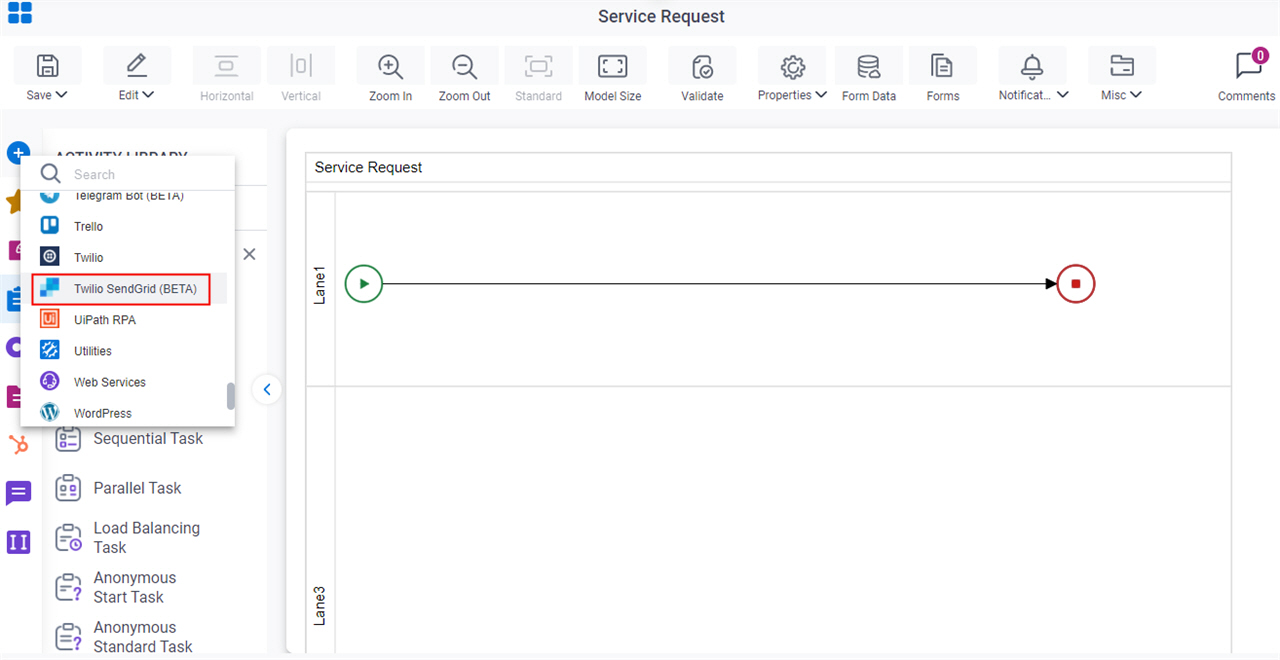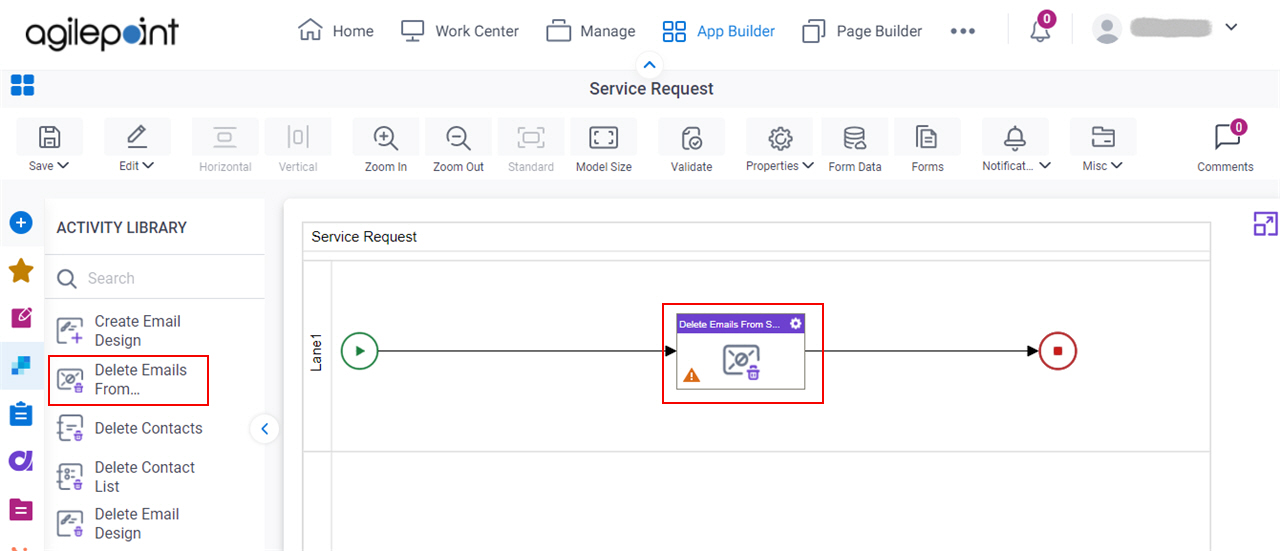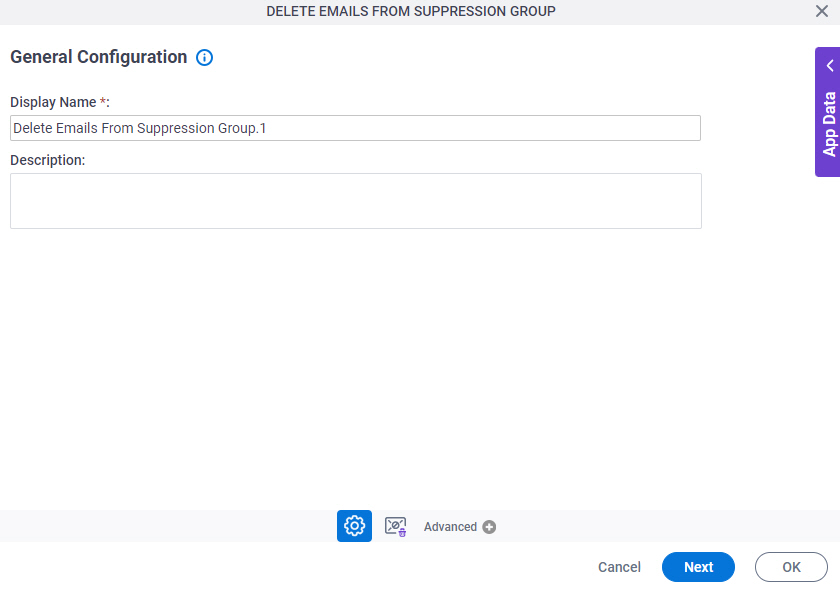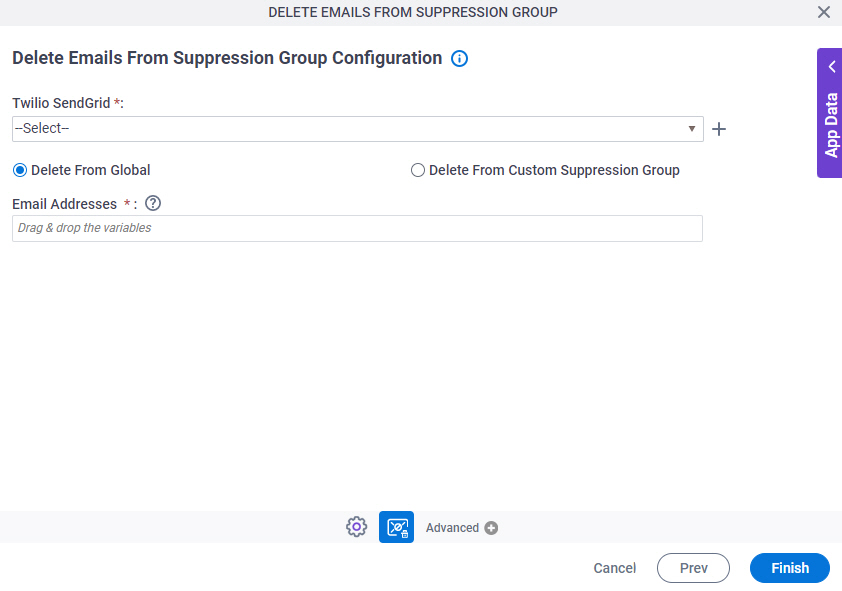Delete Emails From Suppression Group activity
An activity that deletes one or more email addresses from a suppression group in Twilio SendGrid.

Configure the Delete Emails From Suppression Group activity
Prerequisites
- AgilePoint NX OnDemand (public cloud), or AgilePoint NX PrivateCloud or AgilePoint NX OnPremises v8.0 Software Update 2 or higher.
Good to Know
- To send an email notification, click
Advanced
 >
Email Notifications
>
Email Notifications  .
. For more information, refer to Email Notifications screen (Process Activities).
- In most text fields, you can use process data variables as an alternative to literal data values.
- You can configure whether this activity waits for other activities before it runs.
For more information, refer to How Do I Configure an Activity to Wait for Other Incoming Activities?
- This section shows the configuration settings on the configuration screens for this activity. Other configuration settings apply to system activities. For more information, refer to:
How to Start
- Open Process Builder.
For information about how to open this screen, refer to Process Builder.

- In Process Builder, in the Activity Library,
open the Twilio SendGrid tab.

- On the Twilio SendGrid tab,
drag the Delete Emails From Suppression Group
activity onto your process.

General Configuration
Specifies the basic settings for the Delete Emails From Suppression Group activity.

Good to Know
- Documentation for this screen is provided for completeness. The fields are mostly self-explanatory.
Fields
| Field Name | Definition |
|---|---|
|
Display Name |
|
|
Description |
|
Delete Emails From Suppression Group Configuration
Specifies the information about one or more email addresses to delete from a suppression group in Twilio SendGrid.

Fields
| Field Name | Definition |
|---|---|
|
Twilio SendGrid |
|
|
Create |
|
|
Delete From Global / Delete From Custom Suppression Group |
|
|
Custom Suppression Group Name Or ID |
|
|
Email Addresses |
|



